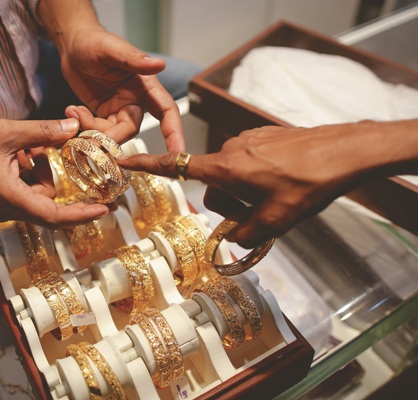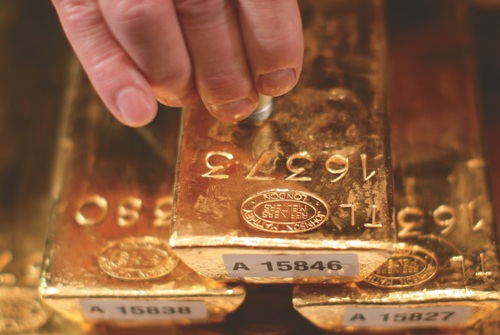World Gold Council demand trend report for Q3 of 2016

In India, more stringent government policies, high gold prices and a squeeze on disposable rural incomes combined to dampen consumer sentiment during Q3 of 2016. Here’s synopsis of the World Gold Council demand trend report for Q3 of 2016.
During the third quarter of 2016, Both China and India, the world’s leading gold markets, experienced a drop in consumer demand this quarter, of 22 per cent and 28 per cent respectively. In China, ongoing economic uncertainty contributed to a softening in sentiment towards the precious metal, which was magnified by high gold prices and changing consumer behaviour. In India, more stringent government policies, high gold prices and a squeeze on disposable rural incomes combined to dampen consumer sentiment. These were key factors in total jewellery demand falling 21 per cent Y-O-Y to 493t.
Alistair Hewitt, Head of Market Intelligence at the World Gold Council said, “The core physical markets of India and China continued to suffer under high prices and squeezed incomes in Q3, but it looks like Q4 may be better. Price expectations have always been a key trigger for gold purchases and consumers responded quickly to the price drop in early October. And in the case of India, the first healthy monsoon in three years will boost rural incomes, supporting demand during the festive and wedding season.”
Demand for gold in India for Q3 2016 was at 194.8 tonnes, down by 28 per cent as compared to overall Q3 demand for 2015 (271.1 tonnes), according to World Gold Council demand trend report for Q3 of 2016. India’s Q3 2016 gold demand value was Rs. 55,970 crore, a drop of 12 per cent in comparison with Q3 2015 (Rs. 63,660 crore). Total jewellery demand in India for Q3 2016 was down by 28 per cent at 154.7 tonnes as compared to Q3 2015 (214.1 tonnes).
India’s tough transition to transparency
After a difficult H1 for India’s gold market, the third quarter continued in much the same vein. Consumer demand has sunk to multi-year lows due to a combination of:
• high and volatile gold prices;
• fragile sentiment among the rural population;
• and government regulation.
Local gold prices in the range of Rs30,000–31,000/10g were a deterrent to gold consumers, having last been at such lofty levels in 2013. And greater price volatility, as much as the price level itself, weighed on demand. Indian consumers will gradually adapt to higher prices – we have seen this many times before – but price volatility combined with higher prices is adamaging combination.
As well as having higher prices to adapt to, the rural population in India has been plagued by lower disposable incomes in recent years. While this year’s healthy monsoon should be positive for demand among this crucial gold-buying demographic, they are struggling to get their incomes back on track after the two preceding years of poor monsoon rainfall. And rural inflation continues to run above urban inflation, further squeezing household incomes.
But perhaps the biggest factor affecting demand is the continued push towards regulation and accountability that the government is levelling at India’s economy in general, including the gold market.
Various government measures have been implemented over recent months, in an attempt to regulate and formalise the gold industry. As discussed in Gold Demand Trends, Second quarter 2016, the government has levied a 1 per cent excise duty on gold jewellery manufacturing and made PAN (Permanent Account Number) cards compulsory for jewellery purchases above Rs. 200,000. In addition, it is clamping down on undeclared income, which often fuels cash-based transactions, and working towards mandatory hallmarking legislation to standardise gold
jewellery.

Jewellery
Gold jewellery demand in Q3 fell 21 per cent Y-O-Y year-on-year to 493.1t. This was the largest decline since Q2 2014 and the lowest third quarter for jewellery demand since 2011 – a time when average gold prices were some 28 per cent higher than recent levels. Year-to-date jewellery demand is 18 per cent down on last year: 1,423.6t vs 1,732.7t. This is the lowest Q1– Q3 total since 2009.
Gold Demand
Global gold demand reached 993 tonnes (t) in the third quarter of 2016, a fall of 10 per cent compared to the same period last year, according to the World Gold Council’s latest Gold Demand Trends report. Net inflows into Exchange-traded products (ETPs) helped drive a sharp increase in investment demand, but this was not enough to offset falls in other areas, notably jewellery and purchases by central banks. Total investment demand rose 44 per cent to 336t, with ETP inflows accounting for 146t, as investors continued to build up their strategic allocations to gold.
The third successive quarter of inflows into ETPs – which were dominated by European funds – were predominantly driven by ongoing economic and geopolitical uncertainty, ahead of the U.S. election and also in Europe post the Brexit referendum decision, and in advance of various European elections next year. These flows were further supported by relatively expensive equity valuations and low-yielding sovereign bonds. By contrast, bar and coin demand totalled 190t in Q3, down 36 per cent Y-O-Y.
Alistair Hewitt commented:
“We continued to see flows into goldbacked ETPs in Q3, taking year-to-date inflows at the end of September to 725t. Institutional investors have looked to hedge against uncertainty stemming from geopolitical risk, including Brexit, the U.S. Presidential race and the potential impact of elections in France and Germany next year. In addition, negative interest rates -a theme ever present this year - continued to underpin institutional demand.”
Total mine supply reached 832t this quarter, down 4 per cent from the 866t seen in the same quarter last year. The relative stability can be attributed to the cost cutting programmes that have been a feature over the past few years. The rising gold price also encouraged consumers to recycle their gold, generating more than 341t of supply this quarter, up 30 per cent on the same period last year.This was particularly prevalent in India, where consumers cashed in their holdings, swelling the amount of recycled gold in the region to 39t, its highest level since Q4 2012.
fall of 10 per cent compared to 1,105t in the same period last year
• Total consumer demand for Q3 2016 fell 26 per cent to 683t from 917t in the same quarter last year
• Total investment demand grew 44 per cent to 336t this quarter compared to 232t last year
• Global jewellery demand was down 21 per cent at 493t, compared with 622t in the same period last year
• Central bank demand reached 82t this quarter, compared with 168t in the same period last year
• Demand in the technology sector was virtually flat year-on-year, down just 1 per cent to 82t
• Total supply grew by 4 per cent to 1,173t this quarter from 1,127t in the third quarter of last year. This was largely driven by recycling, which increased 30 per cent to 341t, from 262t in the same period last year.
Be the first to comment